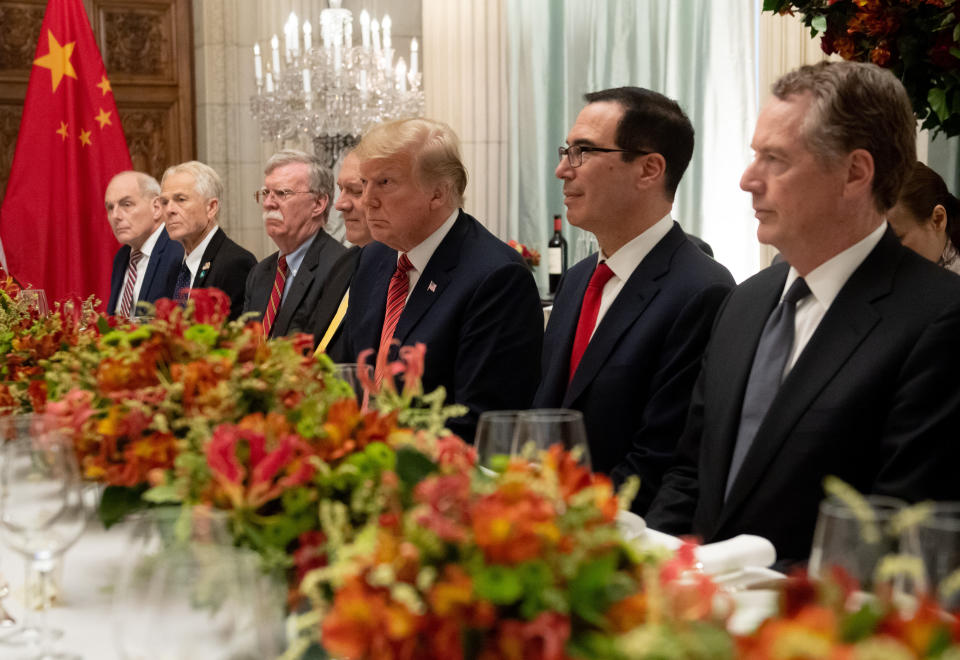White House keeps contradicting itself on U.S.-China trade negotiations
China and the U.S. said different things about their three-hour meeting at G20. And now it looks like President Donald Trump’s closest advisors have their own interpretations of the meeting, too.
Since the Saturday meeting, Trump, the White House, and his top advisors have given different accounts on key details regarding the meeting, causing confusion among investors and trade experts.
When is China’s deadline?
The White House statement on the meeting between Chinese President Xi Jinping and Trump said both sides have agreed to “immediately” begin negotiations and they “will endeavor to have this transaction completed within the next 90 days.” It was considered that the deadline for the negotiation is 90 days from the dinner, which will be March 1.

But on Monday, National Economic Council Director Larry Kudlow told reporters the clock for the trade talk won’t start ticking until January 1. “The President has said 90 days beginning January 1, which is when it was going to go — the 10 to 25 was going to go into effect,” said Kudlow, who attended the dinner as Trump’s top advisor.
As some thought this may leave more time for Washington and Beijing to tackle the complicated deal, the White House issued a statement hours later to correct Kudlow by crossing out the word “January” and inserting “December” in his transcript.
Tuesday morning, Trump confirmed that the timeline for negotiations will be 90 days from the G20 Trump-Xi dinner. He also claimed the negotiations with China have already started. The Chinese haven’t yet publicly acknowledged any deadline.
Who is leading negotiations?

Trump attended the dinner with his top economic advisors, including outspoken China critic Peter Navarro. Who will be put in charge of the negotiations in China has been widely watched. Treasury Secretary Steven Mnuchin had led initial rounds of talk, which made no major progress. U.S. Trade Representative Robert Lighthizer, whose job is to negotiate trade deals, is known for hawkishness towards Beijing.
That’s why when Navarro told NPR that Trump is putting Lighthizer in charge of negotiations, many thought it signaled Washington taking a hard line on China. Navarro called Lighthizer “the toughest negotiator we’ve ever had at the USTR”.
But it contradicts what Mnuchin said on CNBC. “President Trump will be the one who leads the negotiations and the team. We’ll be an inclusive team,” Mnuchin mentioned the five cabinet members working in “partnership”, including himself.
Trump confirmed Navarro’s version of the story that Lighthizer would be the lead negotiator. “Bob will be working closely with Steve Mnuchin, Larry Kudlow, Wilbur Ross and Peter Navarro on seeing whether or not a REAL deal with China is actually possible”, he tweeted on Tuesday morning.
China to cut auto tariffs?
On Sunday night, Trump announced that China agreed to remove tariffs on imported cars from the U.S. in a tweet that many viewed with a grain of salt. This major deal hasn’t been included in any side’s statement on the meeting. Nevertheless, auto stocks rallied on Monday morning following the tweet.
But Trump’s cabinet is not ready to back him on this. “The first part was to reduce the surcharge, but yes there have been specific discussions on where auto tariffs will come down to, but I’m not prepared to talk about the specifics,” Mnuchin told reporters outside the White House.
Kudlow implied there could be no concrete deal on auto tariffs, so far. “We don’t yet have a specific agreement on that, but I will just tell you, as an involved participant, we expect those tariffs to go to zero,” said Kudlow.
While in Beijing, China’s foreign ministry’s spokesman declined to comment on any car tariff changes. It’s unlikely that China could reduce the tariffs to zero as Trump claims. As a World Trade Organization member, if China opts to remove all tariffs on U.S.-imported cars, it will have to do the same thing for other WTO members. “If China lowers its auto tariff to 0% for the U.S., China has MFN (most-favored-nation) obligation to give all WTO members the same 0% tariff,” Jennifer Hillman, a law professor at the Georgetown University, tweeted on Monday.
China just slashed tariffs on foreign cars to 15% in July, but raised duties on American-made cars to 40% in a retaliatory measure to Trump’s tariffs.
Shares of many car companies have given back earlier gains. General Motors, for example, fell by more than 3.5% Tuesday afternoon.
Krystal Hu covers technology and trade for Yahoo Finance. Follow her on Twitter.
Read more:
Trump thinks tariffs are the only way to get China to change, some say no
Why you won’t feel much pain from Trump’s tariffs this holiday season
Amazon bought Whole Foods a year ago. Here’s what has changed
